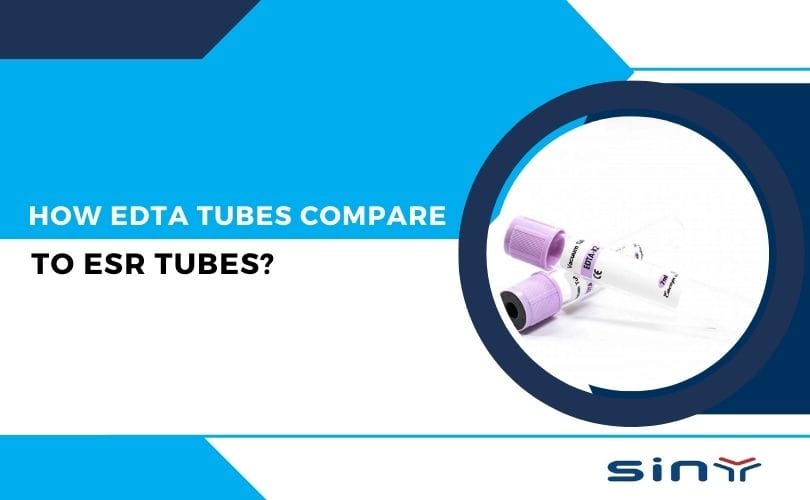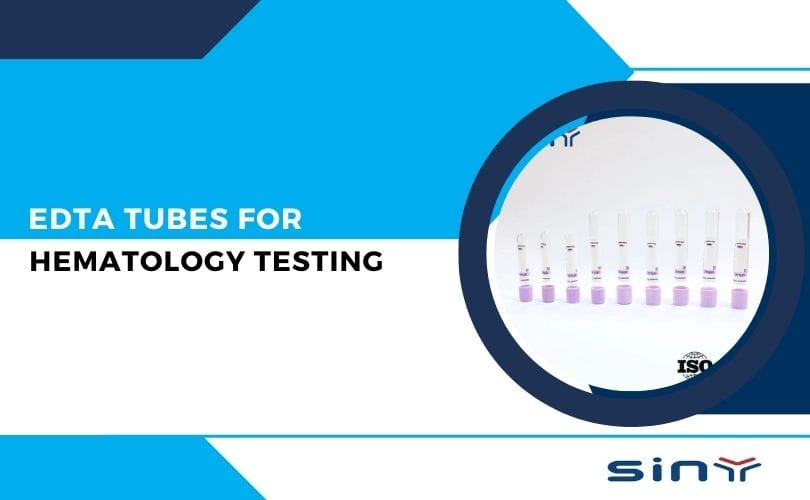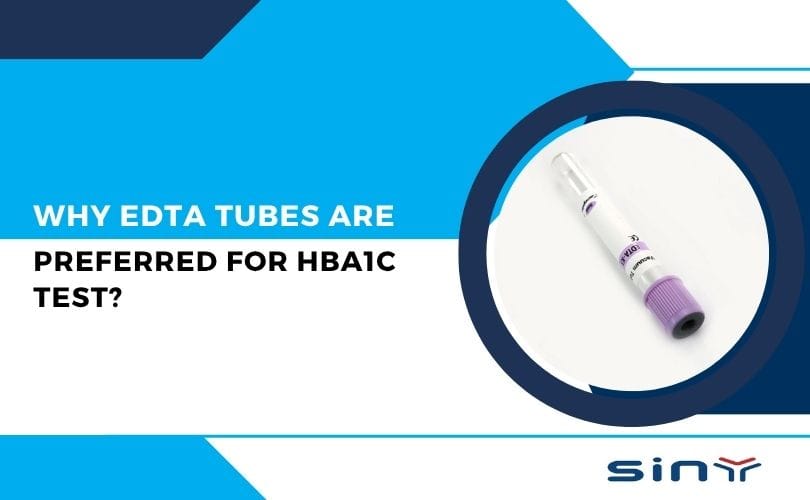In the world of medical diagnostics, blood collection tubes play a pivotal role in ensuring accurate and reliable test results. Among the most commonly used tubes are EDTA tubes and ESR tubes, each designed for specific purposes. While both are essential in clinical settings, they serve different functions and are used for distinct types of blood tests. This blog will delve into the comparison of EDTA tubes and ESR tubes, exploring their uses, differences, and applications in modern healthcare. Whether you’re a medical professional or simply curious, this guide will provide a comprehensive understanding of these critical tools.
What is an EDTA Tube?
An EDTA tube is a type of blood collection tube that contains Ethylenediaminetetraacetic acid (EDTA) as an anticoagulant. Its primary role is to prevent blood from clotting by binding calcium ions, which are necessary for the clotting process.
EDTA tubes are widely used for hematology tests, such as:
Complete Blood Count (CBC)
Blood film for malaria parasites
Hemoglobin estimation
Blood typing and cross-matching
What Are EDTA Blood Collection Tubes?
EDTA tubes are among the most frequently used blood collection tubes worldwide. They contain ethylenediaminetetraacetic acid (EDTA)—either K₂-EDTA or K₃-EDTA—as the anticoagulant.
Key features of EDTA tubes:
Additive: EDTA binds calcium ions in the blood, preventing coagulation.
Common Uses: Complete Blood Count (CBC), hemoglobin levels, platelet counts, reticulocyte analysis, and other hematology tests.
Cap Color: Typically lavender or purple.
Compatibility: Ideal for automated hematology analyzers like Sysmex, Mindray, or Beckman Coulter systems.
Preservation: Maintains blood cell morphology for extended periods, making it perfect for delayed analysis.
You can explore more about EDTA tubes and their types here: EDTA Blood Collection Tubes and What is an EDTA Tube?.
What Are ESR Blood Collection Tubes?
ESR tubes are designed exclusively for Erythrocyte Sedimentation Rate testing—a diagnostic tool for detecting inflammation in the body. They usually contain 3.8% sodium citrate as an anticoagulant, which also dilutes the blood sample to a precise ratio.
Key features of ESR tubes:
Additive: 3.8% sodium citrate.
Cap Color: Black (Westergren method) or light blue (some variants).
Use Case: ESR testing—either manual Westergren method or via automated ESR analyzers.
Time Sensitivity: Samples must be processed within two hours for accurate results.
Standardization: Ensures consistent blood-to-anticoagulant ratios for reproducible measurements.
For detailed ESR tube product specifications, visit: ESR Tubes by Siny Medical and ESR Tube Information.
EDTA Tubes vs ESR Tubes: Core Differences
While both are vacuum blood collection tubes, their composition, function, and stability vary considerably.
| Feature | EDTA Tubes | ESR Tubes |
|---|---|---|
| Anticoagulant | EDTA (K₂ or K₃) | 3.8% Sodium Citrate |
| Primary Purpose | Hematology tests (CBC, platelet counts, etc.) | Erythrocyte Sedimentation Rate (ESR) |
| Cap Color | Lavender/Purple | Black or Light Blue |
| Sample Stability | Stable for up to 24 hours at 4°C | Must be processed within 2 hours |
| Dilution Effect | No dilution—pure anticoagulation | Dilutes blood sample (1:4 ratio) |
| Equipment Compatibility | Hematology analyzers | Westergren racks or ESR analyzers |
| Interchangeability | Cannot be used for ESR tests | Cannot be used for CBC/hematology tests |
Additive Chemistry: EDTA vs Sodium Citrate
The main chemical difference between these tubes lies in the anticoagulant:
EDTA works by chelating (binding) calcium, which is essential for blood clotting. This preserves blood cells in their natural shape and size, making it ideal for microscopic analysis.
Sodium citrate, on the other hand, not only binds calcium but also dilutes the blood. This dilution is critical in ESR testing because it ensures sedimentation rates are measured accurately without cell crowding.
For quality control when working with EDTA tubes, check out: Top Quality Control Tips for Using EDTA Tubes.
Sample Stability and Handling Requirements
EDTA Tubes: Samples can be stored up to 24 hours at 4°C without significant cell degradation. Perfect for labs with delayed processing schedules.
ESR Tubes: Require immediate testing (within 2 hours) because red blood cell shape and settling speed can change quickly after collection.
If you need to order EDTA tubes for better storage flexibility, see: EDTA Tubes for Blood Collection.
Final Takeaways
When comparing EDTA tubes to ESR tubes, the message is simple: they’re both indispensable, but each is built for a specific job. EDTA tubes preserve cell shape for hematology, while ESR tubes create the right dilution for sedimentation rate testing.
By using the correct tube for the correct application, you’re not only protecting the accuracy of your test results—you’re safeguarding patient care.
For more product details and ordering information, visit:
You can also explore their manufacturing process on YouTube – Siny Medical or browse Made-in-China ESR Tube listings.
FAQs
Can EDTA tubes be used for ESR testing?
No. EDTA tubes lack the dilution factor needed for accurate ESR measurement.
Can ESR tubes be used for CBC or platelet counts?
No. Sodium citrate dilutes the blood, making counts inaccurate.
How can I identify the tube type quickly?
Check the cap color and printed label. Lavender is usually EDTA, black/light blue is usually ESR.
What’s the difference between EDTA-K₂ and EDTA-K₃?
K₂ is used mostly in plastic tubes and is better for cell morphology. K₃ is often used in glass tubes but may cause cell swelling.






